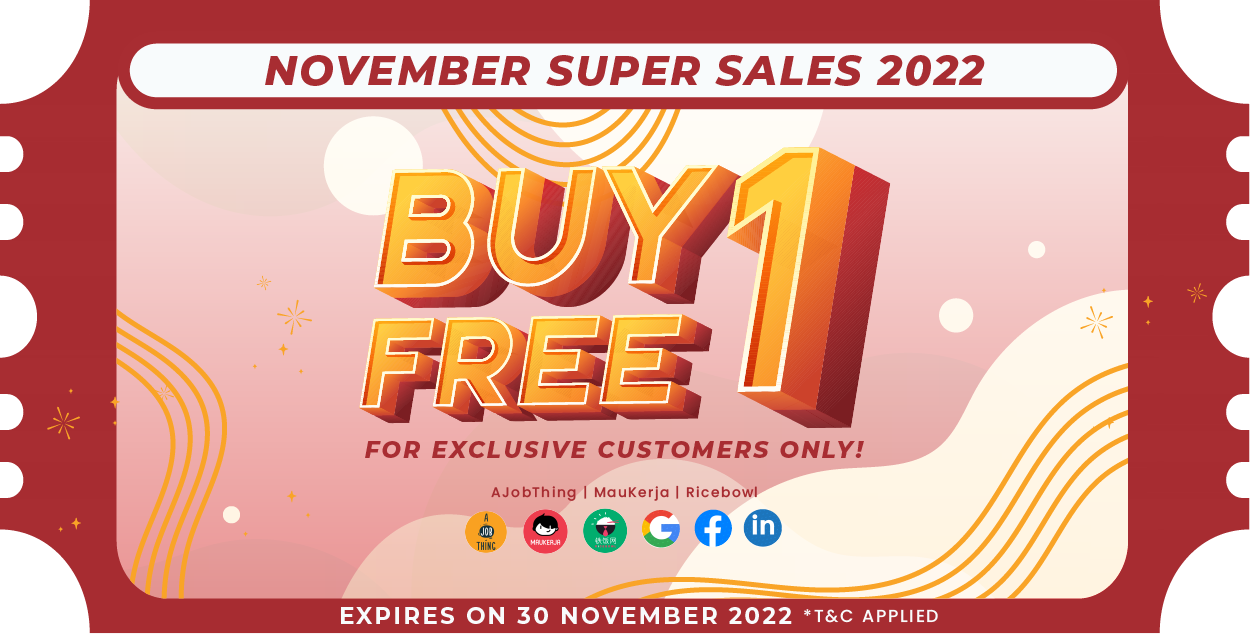
How To Create The Ultimate Interview Process In 4 Steps
Create Job Description Using AI
Write appealing job descriptions for any job opening to attract the most qualifield and suitable candidates. FOR FREE.
try now
Conducting the interview process is hard - when done right, it can win you top talent, but if done poorly, it could leave candidates with a bad impression, wasting your hiring efforts and damaging your employer brand.
But all HR and recruiters want to ensure that the candidates they hire perform well. Sounds simple right? However, most recruiters often fall into the same trap of selecting the candidate they like best in the interview, but the candidate might not necessarily fit the bill when it comes to getting the job done. That is why it is important to set up a structured hiring plan when interviewing candidates to reduce various types of bias in the hiring process.
What is a structured interview?
Most of us have a gist of an unstructured interview, the type where an interviewer ‘ freestyle’ and asks whatever questions they want. On the other hand, a structured interview is carefully crafted to evaluate the candidate based on the criteria for a specific role or job.
Are structured interviews the best way to go?
For one, let’s start with why unstructured interviews are a no-go. Sure, having freeform conversations might seem more enjoyable as they create a casual environment with the candidates. Still, it also means that the interviewer is more likely to repeat questions, look for common topics with candidates (raising the likelihood of bias), or accidentally ask questions they shouldn’t be asking about the candidate’s background.
By focusing on the skills and qualities of the candidate, structured interviews can help reduce bias and improve the likelihood of hiring the right talent who’s a good fit for the job.
Here are 4 steps in developing the ultimate interview program that is consistent and repeatable:
#1 Establish criteria for accessing the candidate
A candidate with an impressive resume and reference may not deliver the results you want for that specific role. Therefore, aligning these expectations with the relevant teams is important to avoid confusion and divided goals.
One way you can do this is to create an intake form to differentiate hiring must-haves from nice-to-haves. Before each interview, use the form as a starting point to ensure the relevant team agrees on the ‘ideal’ candidate’s skills and key job responsibilities. Then develop interview questions based on the must-have requirements. Develop a rating scale (e.g. 1-5, poor to excellent) to access candidates’ answers.
#2 Screening process & preparation for efficient onsite interviews
With so many applications to review, creating a screening process that filters and cuts down on candidates who qualify for a face-to-face interview is crucial. This can be done in the form of an online skill test or a telephone conversation regarding the role and requirements needed.
Once you’ve screened through your candidates, prepare an interview checklist that you will follow through for your onsite interviews. When candidates arrive, you may use these common guidelines:
-
Welcome the candidates and make them feel comfortable
-
Introduce yourself and the interviewer panel
-
Start with simple interview questions (e.g. “What made you apply to our company?”) and continue with more involved ones (e.g. “Tell me about a time when you had to handle an angry client.”)
-
Explain the role and answer candidates’ questions
-
Pitch your company by describing its mission, culture, benefits, and why the candidate should work in your company
-
Give candidates an office tour or allow the opportunity to chat with the team, as this type of openness helps candidates visualize themselves in the role
-
Be transparent about your next follow-up and set clear expectations on when you’ll get back with an update
#3 Post-interview feedback & reference checks
Anyone who has been on the interview panel knows that it’s tempting to discuss assessments among themselves. According to LinkedIn, 75% of people are prone to conformity bias, where they alter their opinions to match the majority.
To prevent this, talk to your panel after the interviews to maintain their raw and honest candidate evaluations. This will also make sure hiring details remain fresh.
You may also collect more data about the candidate by conducting reference checks through the ones provided by the candidate or through other backdoor connections. This helps you gain insight into the candidates’ work in previous companies, their strengths, or any particular concerns to take note of.
#4 Seal the deal with top talents
After making the final call on who you want to hire with your fellow interviewers, it’s time for you to put your best offer on the table. Whether it’s a phone call or a written email offer, let the candidate know that you’re giving them an official employment offer. Ensure to include important details such as the job title, start date, salary, and a due date by which the offer should be accepted or declined.
If possible (or even better), link the career goals the candidate mentioned to you in the interview with your offer. For instance, if they’ve stated that professional growth is essential to them, ensure that you’ve highlighted training or improvement opportunities available in your company.
And that’s about it! Here’s wishing all recruiters and employers the best of luck in hiring the right talent for your company.

For more HR-related content, visit our HR Library!
